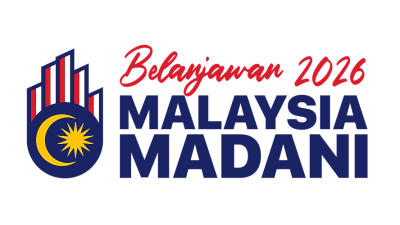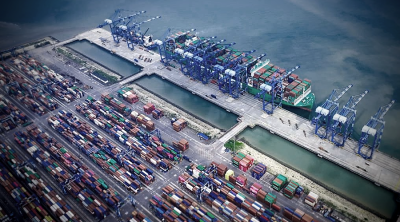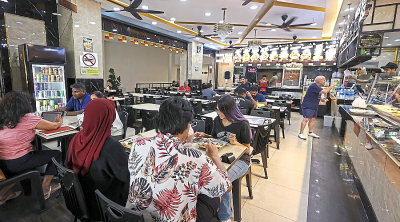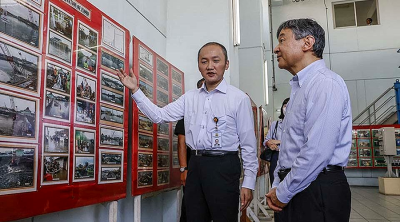
The current skyrocketing prices for vegetables, poultry, eggs and other food items could well exemplify the phenomenon of price gouging.
Price gouging simply means the raising or hiking of prices that are excessive or exorbitant set against the backdrop of demand-side (escalation) or supply-side (contraction) shock – beyond what’s reasonable, common or fair, especially for the ordinary consumer.
This isn’t to deny that there are real-world factors at play – namely:
1. Shipping or freight charges are at an all-time high. A survey by the Malaysian National Shippers’ Council (MNSC) conducted from October 7-10 showed that “… sea freight is now at an all-time high, having increased between 100% and 700% of pre-pandemic level” (“Higher sea freight charges may dampen economic recovery”, The Malaysian Reserve, October 28, 2021). MIDF Research VP and Head of Research Imran Yassin Md Yusof said that rates are expected to normalize only by next year.
If so, what we are seeing could be a situation in which “… [from] at least 80% of the increase [that’s passed on] to consumers to protect margins, [we now have businesses passing] all of the increased costs”.
2. Weather vicissitudes also embody another whammy hitting hard at vegetable production levels. Torrential rain under a rainy season would damage the leafy greens (making them easily susceptible to wilting and rotting). Flooding (caused by deforestation) would destroy the crops entirely.
China, a main source of vegetable imports, has been similarly affected by extreme weather patterns in what’s been dubbed as the “winter monsoon”.
3. Higher costs for fertilizers and other intermediate inputs have resulted from the continuing supply-side shocks in turn due to the ongoing impact of COVID-19.
For example, in terms of our imports, the shortage of phosphate fertilizers has been caused by higher energy, i.e. natural gas, prices.
In terms of local production, average natural gas prices increased by 21% as reported in The Edge (October 11, 2021).
According to the World Bank, fertilizer prices are only expected to ease in 2022.
Back to the issue of price gouging, this would mean that certain stakeholders/players in the supply chain could have exploited and taken advantage of the situation to further increase prices so as to enjoy higher profit margins – i.e. profiteering.
The Ministry of Domestic Trade and Consumer Affairs must deploy the Price Control and Anti-Profiteering Act 2011 (“2011 Act”) in full force.
Under the Price Control and Anti-Profiteering (Mechanism to Determine Unreasonably High Profit for Goods) Regulations (2018), the “… determinant of profiteering (unreasonably high profit) is formulated using the measurement of one financial year [FY] period or calendar year [CY] period of business. The profiteering occurs when the mark-up percentage [MUP] or margin percentage [MP] of the current year exceeds the percentage of basic profit for that year”.
The current MUP/MP is based on the MUP/MP on the first day of the previous year and the trend difference of MUP/MP for the previous three years.
For example, MUP/MP for 2018 is 18% for FY2018, 20% for FY2019 and 22% for FY2020, then one looks at the marginal difference between the succeeding (current) and preceding (previous) year for a total of the three years.
It’d be considered as profiteering if the MUP/MP exceeds 18%, i.e. 22% + 2% – the 2% being the basic profit in the form of the average trend difference for the three years.
The unprecedented impact of COVID-19 can’t be used as justification for excessive mark-ups.
Across the supply chain, there have been instances of wage cuts coupled with the Wage Subsidy Program (WSP), electricity discounts, loan moratoriums, etc. together with the Temporary Measures for Reducing the Impact of coronavirus Disease 2019 (COVID-19) Act 2020 which provide for contractual reliefs until December 31, 2021.
EMIR Research would now like to propose the following strategies to deal with the issue of high food inflation – emanating from structural (i.e. internal) and external factors:
Cooperatives
The government should muster cooperatives to be at the forefront of combating the “middlemen” and wholesalers who exploit their bargaining power to short-change farmers/producers.
In this regard, the Ministry of Agriculture and Food Industry (MAFI) and the Federal Agricultural Marketing Agency (FAMA) should work closely with the Area Farmers’ Organization/Pertubuhan Peladang Kawasan (PPK) – agricultural cooperative reorganized under the Farmers Organization Act (1973) to ensure that reliance on middlemen throughout the nation’s food crop supply chain is reduced or weakened altogether.
The recent rebranding of the Agricultural Product Collection Center (APCC) to Peladang Outlet (PO) of which the Kuala Langat PPK is an eminent example should be accelerated and expanded.
In addition, agricultural cooperatives should synergize with other wholesalers and retail cooperatives – as part of the next stage of the supply chain – to ensure that the bulk purchasing power is maximized for the benefit of the consumer.
At the same time, FAMA should increase and augment its storage and warehousing capacity either for its own use or by renting it out (on a nominal fee) to the cooperatives.
Price controls
The Ministry of Domestic Trade and Consumer Affairs must apply Section 4 of the 2011 Act – with respect to the determination of prices – to the middlemen or the mid-stream of the supply chain and not merely focusing its attention on the wet markets and super-markets/hyper-markets – retailers and end-distributors.
The State must pro-actively intervene in this aspect of the supply chain by enforcing and imposing heavy penalties/fines.
Towards this end, the Ministry should employ more surveillance and enforcement officers who are to feed the real-time information and data into a Laksana (Economic Stimulus Implementation and Coordination Unit Between National Agencies)-type e-system in place. This is so that the real-time digital dashboard can be the repository of the Big Data for monitoring and surveillance of prices from all the states on a 24-hour basis.
The Malaysian Anti-Competition Commission (MyCC) must come out with its regulatory guns blazing also through the Competition Act (2010) to enforce anti-competition laws against horizontal (i.e. among competitors) and vertical (e.g. between upstream, i.e. producer and mid-stream, i.e. wholesaler) price fixing.
Digitalization – e-commerce
Our farmers should also be encouraged to on-board e-commerce programs that also eliminates the use of middlemen in the agribusiness supply chain.
Entities such as Our Farm which “leverages AirAsia’s robust all-encompassing ecosystem, which includes cargo, logistics and payment capabilities” enables small businesses to reduce the cost of fresh produce procurement by up to 25%.
There should be a common digital platform (under the auspices of e.g. FAMA) – which could build upon the pre-existing AgriData, for example – to link other farmers/producers to the business-to-business (B2B) marketplace. This comprehensive centralized database will contain the listing of every single produce locally grown.
Digitalization – smart farming
As also mentioned in past EMIR Research articles, smart farming/precision farming and digitalization of agriculture can help reduce costs (including labor) and increase both yield and income.
The use of the Internet-of-Things (IoT) and automation to control and monitor the farming process from fertilization and irrigation which is combined as fertigation to pesticide spraying and harvesting will also reduce wastages and leakages whilst enhancing the quality of the output.
In the long run, Big Data will allow for crop rotation based on fluctuations of demand and price stability.
Subsidies
The government should consider providing subsidies across the supply chain (excluding the middlemen).
For example, the Malaysian National Shippers’ Council (MNSC) Chairman Datuk Andy Seo has called for more grants to cover logistics costs.
Intermediate inputs such as fertilizers and production feed should be subsidized by the government for a time-limited period.
The subsidies could come from what’s an Inflation Stabilization Fund.
Forwards and futures contracts
The Ministry of International Trade and Industries (MITI) should collaborate with the Securities Commission (SC) and Bursa Malaysia to induce the use of futures contracts for vegetable, fish and meat importers which are currently limited to commodities.
This should also include rice.
It’ll help lock in the future price of the food imports.
The futures can be sold to a government-linked company set up by the Ministry of Finance (MOF) on the secondary market.
Shortening the supply chain
For the long-term, the government should come up with a food security action plan that promotes urban farming and imports from within Asean.
Cartels
The government must put its foot down/clamp down hard on the cartels, including related to law-enforcement agencies, and monopolies.
There’s no doubt that corruption, i.e. kickbacks or graft given to law-enforcement officials by middlemen play a crucial role too.
In conclusion, like Lee Kuan Yew in facing down the errant pilots of the Singapore Airlines Pilots’ Association (Siapa) in 1980, the government of the day must read the riot act and address the perennial problem of middlemen and cartels (public and private) and take the necessary and decisive action.
In short, the State should ensure tighter supervision and management of the entire supply chain.
(Dr Rais Hussin and Jason Loh Seong Wei are part of the research team of EMIR Research, an independent think tank focused on strategic policy recommendations based on rigorous research.)
ADVERTISEMENT
ADVERTISEMENT






































